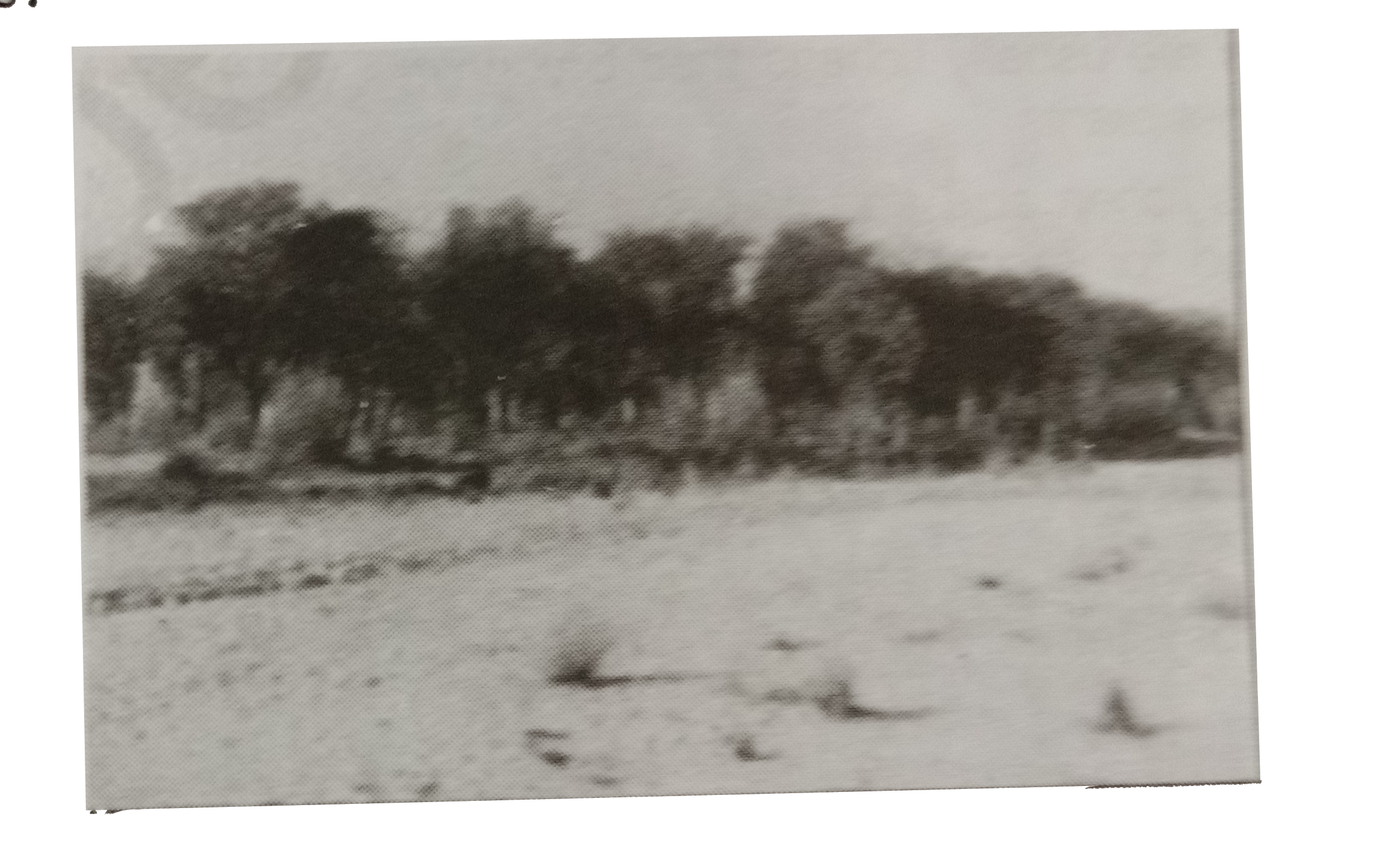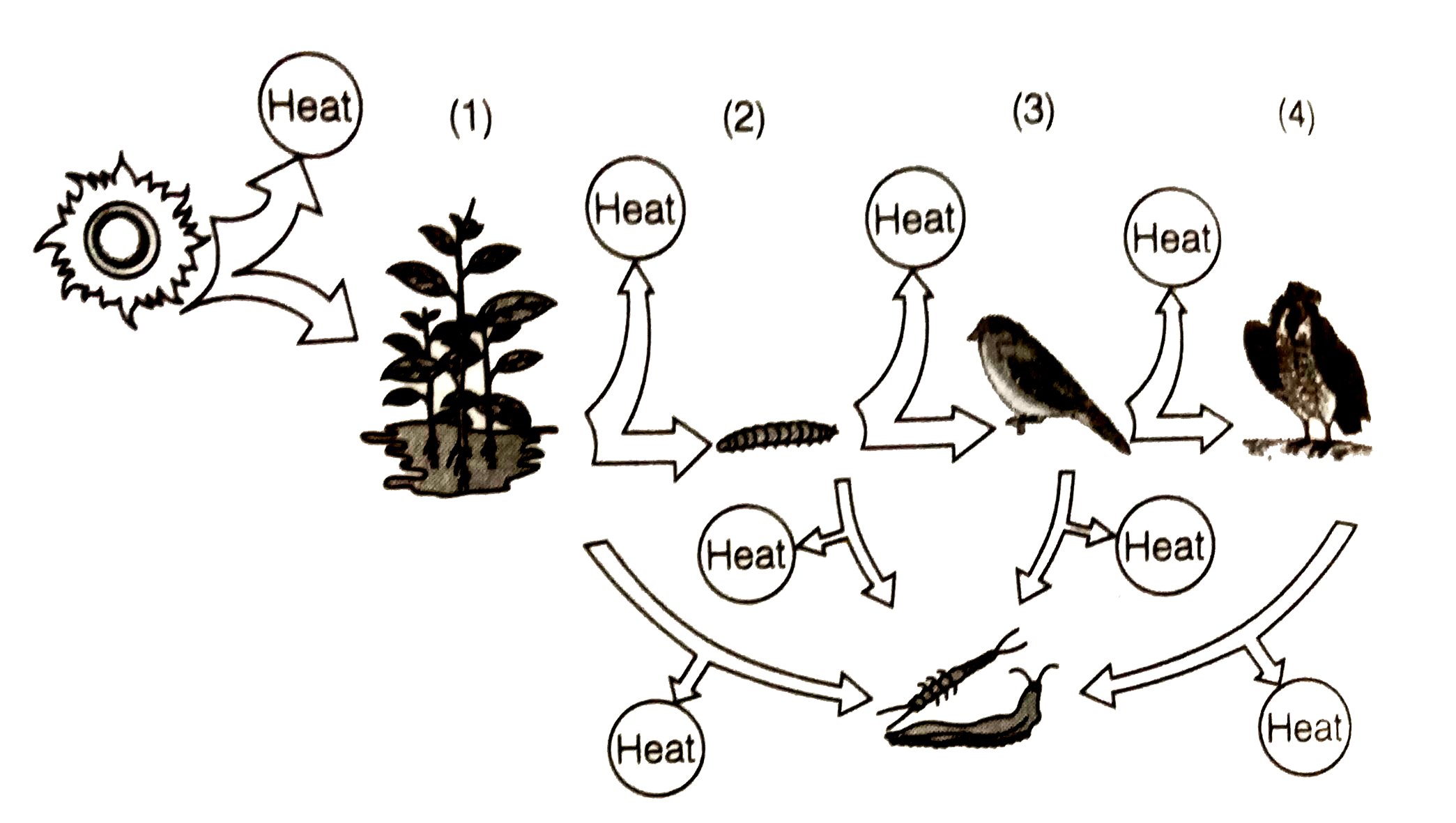Complete Solutions to Ecosystem of chapter ECOSYSTEM of Class 12 book with complete answers and questions
| Class 12 | BIOLOGY |
| Chapter | ECOSYSTEM |
| NCERT EXEMPLAR | Ecosystem |
| Number Of Questions | 67 |
| Academic Year | 2023-24 |
Decomposers like fungi and bacteria are:
i. autotrophs ii. heterotrophs
iii. saprotrophs iv. Chemo-autotrophs
Choose the correct answer:04:53View SolutionThe process of mineralisation by microorganisms helps in the relase of
02:20View SolutionProductivity is the rate of production of biomass expressed in terms of
(i) `("kcal"m^(-3))yr^(-1)`
(ii) `g^(-2)yr^(-1)`
(iii) `g^(-1)yr^(-1)` (iv) `("kcal"m^(-2))yr^(-1)`02:47View SolutionAn inverted pyramid of biomass can be found in which ecosystem?
02:07View SolutionWhich of the following is not a producer?
01:32View SolutionWhich of the following ecosystems is most productive in terms of net primary production?
01:49View SolutionPyramid of numbers is
03:11View SolutionApproximately how much of the solar energy that falls on the leaves of a plant is converted to chemical energy by photosynthesis?
01:42View SolutionAmong the following where do you think the process of decomposition would be the fastest?
02:36View SolutionHow much of the net primary productivity of a terrestrial ecosystem is eaten and digested by herbivores?
02:35View SolutionDuring the process of ecological succession, the changes that take place in communities are
02:57View SolutionClimax community is in a state of
02:04View SolutionAmong the following biogeochemical cycles, which one does not have losses due to repiration?
01:40View SolutionThe sequence of communities of primary succession in water is
03:49View SolutionThe reservoir for the gaseous type of bio-geo chemical cycle exists in:
01:57View SolutionIf the carbon atoms fixed by producers already have passed through three species, the trophic level of the last species would be
02:05View SolutionWhich of the following type of ecosystem is expected in an area where evaporation exceeds precipitation, and mean annual rainfall is below 100mm:
01:58View SolutionThe zone at the edge of a lake or ocean which is alternatively exposed to air and immersed in water is called.
02:01View SolutionEdaphic factor refers to
01:32View SolutionWhich of the following is an ecosystem service provided by a natural ecosystem?
02:38View SolutionName an organism found as secondary carnivore in an aquatic ecosystem.
02:29View SolutionWhat does the base tier of the ecological pyramid represent ?
01:21View SolutionUnder what conditions would a particular stage in the process of succession revett back to an earlier stage?
01:20View SolutionArrange the following as observed in Vertical stratification of a forest, Grass, Shrubby plants, Teak, Amaranths.
01:19View SolutionName an omnivore which occurs in both grazing food chain and the decomposer food chain.
01:00View SolutionJustify the pitcher plant as a producer.
01:42View SolutionName any two organisms which can occupy more than one trophic level in an ecosystem.
01:19View SolutionIn the North East region of India, during the process of jhum cultivation, forests are cleared by burning and left for regrowth after a year of cultivation. How would you explain the regrowth of forest in ecological term?
01:57View SolutionClimax stage is achieved quickly in secondary succession as compared to primary succession. Why?
01:27View SolutionAmong bryophytes, lichens and fern which one is a pioneer species in a xeric succession?
02:12View SolutionWhat is the ultimate source of energy for the ecosystems?
00:53View SolutionIs the common edible mushroom an autotroph or a heterotroph?
01:13View SolutionWhy are oceans least productive?
01:44View SolutionWhy is the rate of assimilation of energy at the herbivore level called secondary productivity?
01:30View SolutionWhy are nutrient cycles in nature called biogeochemical cycles?
04:39View SolutionGive any two examples of xerarch succession.
01:03View SolutionDefine self sustainability
01:06View SolutionGiven below is a figure of an ecosystem. Answer the following questions?

(i) What type of ecosystem is shown in the figure?
(ii) Name any plant that is characteristic of such ecosystem.02:11View SolutionWhat is common to earthworm, mushroom, soil mites and dung beetlein an ecosystem.
01:22View SolutionOrgnisms at a higher trophic level have less energy available. Comment.
02:09View SolutionThe number of trophic levels in an ecosystem are limited. Comment.
01:44View SolutionIs an aquarium a complete ecosystem?
01:24View SolutionWhat could be the reason for the faster rate of decomposition in the tropics?
02:04View SolutionHuman activities interfere with carbon cycle. List any two such activities.
01:26View SolutionFlow of energy through various trophic levels in an ecosystem is unidirectional and non-cyclic. Explain.
02:17View SolutionApart from plants and animals, microbes form a permanent biotic component in an ecosystem. While plants have been referred to as autotrophs and animals as heterotrophs. What are microbes referred to as? How do the microbes fulfill their energy requirements?
03:13View SolutionPoaching of tiger is a burning issue in today’s world. What implication would this activity have on the functioning of the ecosystem of which the tigers are an integral part?
02:54View SolutionIn relation to energy transfer in ecosystem, explain the statement ”10kg of deei’s meat is equivalent to 1 kg of lion’s flesh".
02:49View SolutionPrimary productivity caries from ecosystem to ecosystem. Explain ?
01:41View SolutionSometimes due to biotic/abiotic factor the climax remain in a particular seral stage (pre climax) without reaching climax. Do you agree with this statement. If yes give a suitable example.
03:04View SolutionWhat is an incomplete ecosystem? Explain with the help of suitable example.
02:27View SolutionWhat are the shortcomings of ecological pyramids in the study of ecosystem?
02:49View SolutionHow do you distinguish between humification and mineralisation?
01:51View SolutionFill in the trophic levels (1,2,3 and 4) in th eboxes provided in the figure.
 02:15View Solution
02:15View SolutionThe rate of decomposition of detritus is affected by the abiotic factors like availability of oxygen, pH of the soil substratum, temperature etc. Discuss.
03:04View SolutionA farmer harvests his crop and expresses his harvest in three different ways.
(a) I have harvested 10 quintals of wheat.
(b) I have harvested 10 quintals of wheat today in one acre of land.
(c) I have harvested 10 quintals of wheat in one acre of land, 6 months after sowing.
Do the above statements mean one and the same thing. If your answer is ‘yes', give reasons. And if your answer is ’no’ explain the meaning of each expression.03:03View SolutionJustify the following statement in terms of ecosystem dynamics. "Nature tends to increase the gross primary productivity, while man tends to increase the net primary productivity".
04:21View SolutionWhich of the following ecosystems will be more productive in terms at: primary productivity? Justify your answer. A young forest, a natural Old forest, a shallow polluted lake, alpine meadow.
02:57View SolutionWhat are the three types of ecological pyramids. What information is conveyed by each pyramid with regard to structure, function and energy in the ecosystem.
07:47View SolutionWrite a short note on pyramid of numbers and pyramid of biomass.
02:36View SolutionGiven below is a list of autotrophs and heterotrophs. With your knowledge about food chain, establish various linkages between the organisms on the principle of ’eating and being eaten’. What is this inter-linkage established known as?
Algae, hydrilla, grasshopper, rat, squirrel, crow, maize plant, deer, rabbit, lizard, wolf, snake, peacock, phytoplankton, crustaceans, whale, tiger, lion, sparrow, duck, crane, cockroach, spider, toad, fish, leopard, elephant, goat, Nymphaea, Spirogyra.03:47View Solution”The energy flow in the ecosystem follows the second law of thermodynamics.” Explain.
02:19View SolutionWhat will happen to an ecosystem if
(a) All producers are removed
(b) All organisms of herbivore level are eliminated and
(c) All top carnivore population is removed02:24View SolutionGive two examples of artificial or man made ecosystems. List the salient features by which they differ from natural ecosystems.
02:06View SolutionThe biodiversity increases when one moves from the pioneer to the climax stage. What could be the explanation?
04:44View SolutionWhat is a biogeochemical cycle. What is the role of the reservoir in a biogeochemical cycle? Give an example of a sedimentary cycle with reservoir located in earth's crust.
06:00View SolutionWhat will be the P/R ratio of a climax community and a pioneer community? What explanation could you offer for the changes seen in P/R ratio of a pioneer community and the climax community?
07:03View Solution
Ecosystem questions and complete solutions for chapter ECOSYSTEM of NCERT BIOLOGY (HINGLISH) of Class 12
